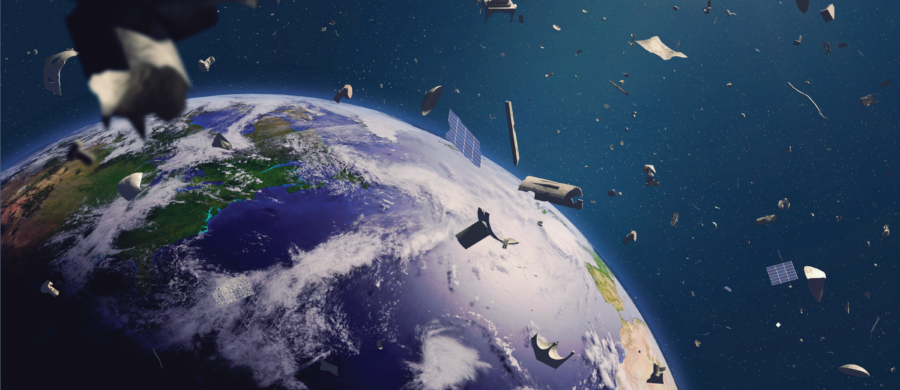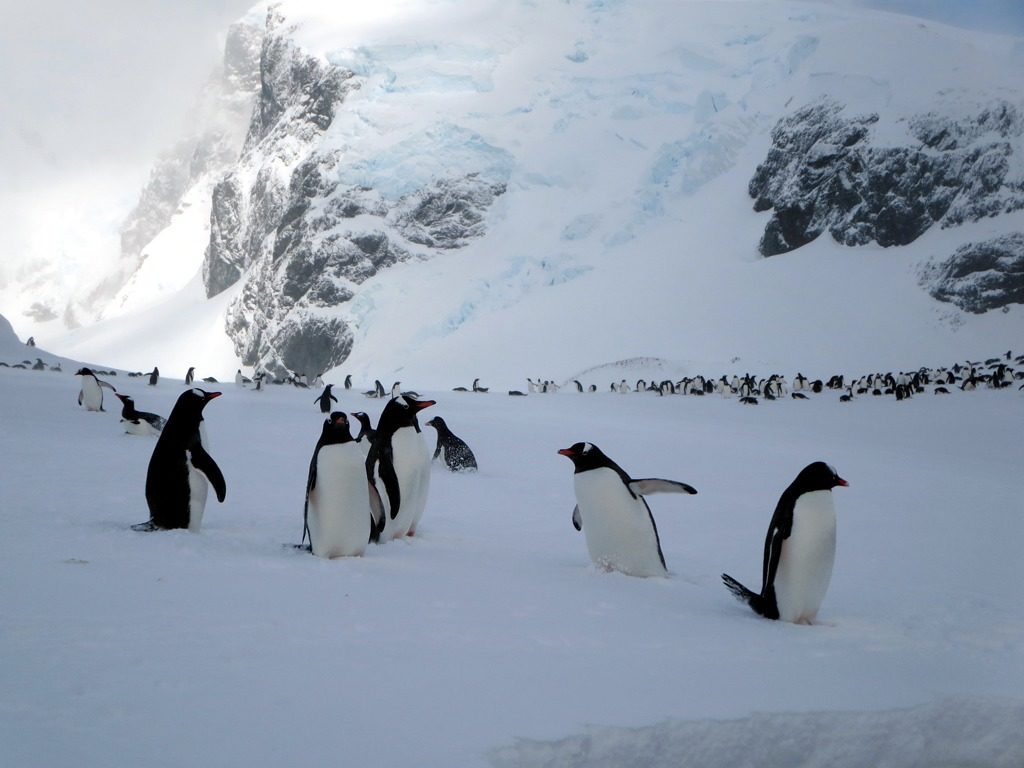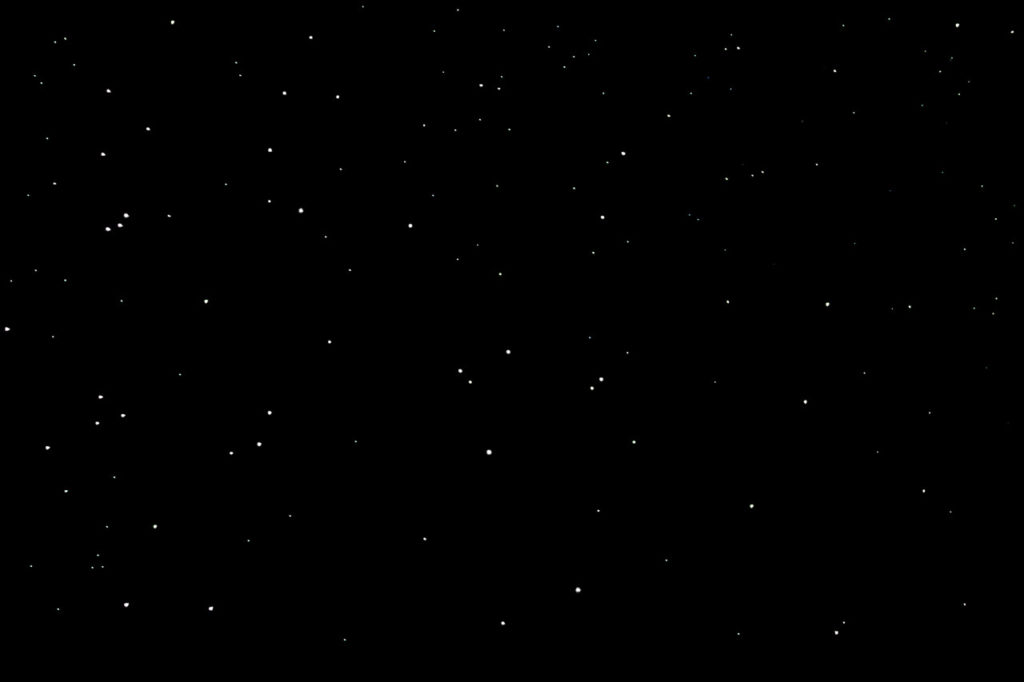
Wilderness or Open Space? Contextualising Environmental Concern in the Second Space Age
Technology’s Stories v. 7, no. 1 – DOI: 10.15763/jou.ts.2019.03.13.01
PDF: Handmer_Wildnerness or Open Space
For millennia, anthropogenic creep has been slowly but surely transforming planet Earth from a living, breathing solar-system anomaly to a sort of mechanised, weaponised and plasticised cyborg. In this context the 500,000 trackable odds and ends that have been jettisoned, abandoned, detached, or lost by generations of space travellers are an orbital extension this process.[1]
In some ways, then, it doesn’t make sense that when Rocket Lab, a private aerospace manufacturer, launched a satellite called the Humanity Star in early 2018, there was an immediate and hostile response from a portion of the international astronomer and astrophysicist community.[2] Some called it “graffiti,” and astronomer Caleb Scharf wrote “it’s hogging some of that previous resource, the dark night sky, polluting part of the last great wilderness.”[3] Why was there such outrage in response to an object that represented a mere 0.00015% of the total number of trackable objects in orbit? After all, the Humanity star was not politically controversial, and it had a fixed (short) span of life. It contained no hazardous materials and was designed to burn up entirely on re-entry.
I argue that this recent understanding of space as a ‘wilderness’ in need of protection aligns it conceptually and historically with another precariously internationally governed space, Antarctica. In both cases, discourse presumes a symbolic representation of unspoiled nature, against which the Humanity Star may be seen as graffiti and private-sector interests as an existential threat, distracting from pressing problems of pollution and debris.
I suggest that space law is best understood as a socially constructed technology, and that space should be conceptualised as an open projection space upon which interested individuals or groups position and curate symbols in order to enclose space and form a new gateway through which to filter access.

A colony of penguins in Antarctica. Photograph by David Stanley. CC BY 2.0.
Antarctica: The Penultimate Frontier
Antarctica and space are both difficult and expensive to get to and risky to be in. Both have played host to a Heroic Era of (mostly male) exploration, albeit fifty years apart, and to highly nationalised ‘races’ to arbitrary goalposts. In particular, the race to the moon reflects many of the same characteristics of the Amundsen and Scott race to the South Pole. If the Space Race has been immortalised in narratives that “were deeply grounded in domestic cultural discourses that simultaneously couched their achievements as if they had universal import,”[4] the same might be said of early Antarctic exploration. Amundsen and Scott’s journeys have become symbols of different virtues – Amundsen for his planning, physical and mental resilience, and speed across the ice, and Scott for his courage in the face of adversity and dedication to science.[5] As Roberts writes, the actual race has become subordinate to the values represented by the parties to it.
Similarly, the signing of the Antarctic Treaty in 1959 made the Antarctic continent a vehicle for symbolic and ideological activity only. In it, the Soviet Union and the USA specifically excluded Antarctica from the scope of the Cold War. The first article of the Treaty states: “Antarctica shall be used for peaceful purposes only. There shall be prohibited, inter alia, any measures of a military nature, such as the establishment of military bases and fortification, the carrying out of military manoeuvres, as well as the testing of any type of weapons.”[6] As a result, Antarctica was only depoliticised in the physical sense, with scientific activity and performance of the Treaty becoming the means by which nations, to this day, advance ideological concerns.
It is worth noting that the image of ‘science’ presented in both the Antarctic Treaty and the Outer Space Treaty is one that aligns quite closely with Robert Merton’s ‘CUDOS’ norms.[7] Merton outlined four norms of behaviour that he argued formed the “ethos of modern science.”[8]
The principles which form the Outer Space Treaty, created in the late 1960s, project forward the same sort of conception of science identified by Merton. Under both the Antarctic and Outer Space Treaty Systems, processes are outlined for the formal sharing of scientific research, universal access and equity, and organisations are created for the sole purpose of enacting the norms of the treaty through cooperative scientific endeavours. As a result, the Systems appear on their face to match closely with the “ethos” identified by Merton mere decades earlier.
The Antarctic Treaty System enabled a concentrated period of scientific cooperation to occur, benefiting from increased public funding and rapid technological development. In the 1980s, as this technological development opened wide the gateway for private-sector access to Antarctica, discourse pivoted. Rather than a wilderness to be conquered, Antarctica became a wilderness to be cherished and protected from private-sector-led environmental threats.
The Madrid Protocol solidified this conception of Antarctica’s role as a continent by and for science. Although space is governed by a similar Treaty System (signed less than 10 years after the Antarctic Treaty), the role that space ought to play is still the subject of conflicting philosophies, as evidenced by the recent struggle for primacy between private enterprise, national space programs, and interested communities of scientists.[9]

Stars in the night sky. Photograph by Vera Kratochvil. Image in the Public Domain.
Public International Law as a Technology
How do legal, scientific, technological and strategic factors play out in practice?
From 2015 to 2016 I conducted primary research on a highly successful instance of international cooperation between scientists from the Soviet Union, France, and the USA at Lake Vostok, Antarctica. The cooperative program withstood the Cold War geopolitical tensions that affected US-Soviet relations elsewhere, including the fall of the Soviet Union. It disintegrated in the 1990s and 2000s, culminating in the unilateral contamination of Antarctica’s largest subglacial lake by a team of Russian scientists in 2012.[10] My research was hampered by the lack of a framework with which to adequately make sense of the situation. Actor Network Theory got me part of the way to explaining the physical contamination, but it cannot easily answer the question of symbolic contamination. In the aftermath of the event, key actors continued to enact scientific norms encoded in the Antarctic Treaty, consciously maintaining the norms that support its existence.
I came to the view that taking a ‘top-down’ approach to international law—that is, to begin with what the law says and then to analyse instances where it is, or is not, followed by State actors—is insufficiently flexible to satisfactorily account for instances of substantive disruption. These instances can include the contamination of a unique subglacial lake, the launch of a humanities-based object into a symbolically scientific realm, the invasion of that same realm by explicitly individualistic and commercial interests, or the nationalistic declaration of a ‘Space Force’.
Instead, I propose taking a ‘bottom-up’ view and considering the ways in which Public International Law, like science, can be understood as being socially constructed. Both space and Antarctica represent fluid and multifaceted nexuses between legal norms, social norms, and norms of scientific behaviour. International Law itself can be seen as a socially constructed technology. Actors can invoke or explicitly exclude it in order to enclose an area, physically and conceptually, through a process akin in some senses to boundary work. The technology can be manipulated and morphed through the conscious or unconscious performance of meaning-laden symbols, and these symbols are projected onto a particular characterisation of the space in question, establishing a mandate for granting or denying access to other groups or individuals.
Disruption
Just as mining was historically viewed as a threat to the narrative and mythology of Antarctica, a number of challenges to the narrative of peaceful scientific cooperation in space have arisen in recent years.
Like the Humanity Star, Musk’s Tesla Roadster and ‘Starman’, launched on 6 February 2018, drew controversy with some seeing it as an act of excessive ego, and others saw it as a massive advertisement, in the as-yet minimally commercialised symbolism of space. [11] It projected the persona of Musk as an individual and his brands into a nationalised narrative.
On 18 June 2018 US President Donald Trump announced his proposal to separate space operations from the Airforce and create a ‘Space Force’. This announcement was controversial because it challenged norms of peace which have formed in relation to space through cooperative international scientific efforts such as the ISS. So too the description of space as a ‘warfighting domain’ has been interpreted as running contrary to the principles of peaceful international cooperation set out in the Outer Space Treaty.[12]
Constructing a wilderness
All three of these objects (or concepts) have been characterised as ‘threats’ to space and to international peace. In characterising them as such, an image of space against which they appear ‘other’ than the norm has been established such that what is implicit is made perspicuous.
The Antarctic continent is riddled with the refuse from generations of scientific expeditions and space plays host to millions of debris fragments, but discourse about it presumes a symbolic representation of unspoiled nature. On one hand a white ice-sheet dotted with black penguins, with science defending against metaphorical contamination that might justify access by non-scientific interests. On the other hand, a black sky dotted with white stars, against which the Humanity Star may be seen as graffiti and private-sector interests as an existential threat.
The concerns expressed by scientists, politicians, academics and the general public in relation to the Humanity Star, Tesla Roadster and Space Force arise chiefly because they counter the symbolic version of space with which we regularly engage. In this sense, these three objects or events may be viewed as ‘space debris’ because they ‘pollute’ two social constructions of space on a symbolic level. First, they subvert the mythological narrative that characterises space as being above political, environmental and economic concerns that pervade society on Earth. Second, they challenge the power of the norms and principles of the Outer Space (and other) Treaties and customary international law to dictate the uses of space in and of themselves.
Conclusion
The key sticking point for those trying to understand how best to operate with the Outer Space Treaty in an increasingly challenging environment is the conflict between essentialist and constructivist views of international law. Some branches of sociology of science have diverged from Merton’s essentialist approach to science and have considered that science may be, at least in some ways, socially constructed.[13] However, international space law trades on a collective believe that there is something inherently potent in the principles that are encoded within the Outer Space Treaty. Attempts to rein in the challenges posed by technological development and increased access to space for commercial, military or other purposes are therefore likely to be frustrated. Particularly in an environment without case law or any near-term prospect of gaining it, what matters is not the Treaty itself, but the socially constructed belief that there are certain norms of behaviour that must be upheld. Gestures to the Treaty System as authority for assertions that behaviour is undesirable or even contravenes international law will only be as effective as the collective weight that international players place on the Treaty. The law itself, in the sense of Treaties, guidelines, and decisions of international and domestic courts, can only form part of the picture, and is the least malleable of all elements constituting the socially constructed system that determines the behaviour of states.
Conceptualising Public International Law (particularly Space Law) as a socially constructed technology is useful because it enables us to better understand how the day-to-day actions of individuals and groups working in, on, and around space contribute to our socially constructed understanding of international space law. Moreover, it reveals how frameworks developed in the fields of Science and Technology Studies and the Sociology of Science might be applied to this problem. Ultimately, analysis performed in this manner reveals fertile ground for the academic study of international scientific activity, cooperation, and diplomacy, providing a robust conceptual framework within which primary research can be carried out. By doing so, it is possible to reveal the forces at play in space in recent years.
Notes
[1] “Space Debris and Human Spacecraft,” NASA, https://www.nasa.gov/mission_pages/station/news/orbital_debris.html.
[2] Ben Guarino, “Company Shoots Shiny Orb into Orbit and Angers Astronomers over ‘Space Graffiti’,” The Washington Post, 26/1/2018 2018.
[3] Ibid.; Caleb A. Scharf to Life, Unbounded, 16/3/2018, 2018, https://blogs.scientificamerican.com/life-unbounded/twinkle-twinkle-satellite-vermin/.
[4] Asif A. Siddiqi, “Competing Technologies, National(Ist) Narratives, and Universal Claims: Toward a Global History of Space Exploration,” Technology and Culture 51, no. 2 (2010): 433.
[5] Peder Roberts, “Heroes for the Past and Present: A Century of Remembering Amundsen and Scott,” Endeavour 35, no. 4 (2011):p. 145.
[6] “Antarctic Treaty”, opened for signature on 1 December 1959, 402 U.N.T.S. 71; 12 U.S.T. 794; 19 I.L.M 860 (entered into force on 23 June 1961), [Art. I]
[7] Robert K. Merton, “The Normative Structure of Science,” in The Sociology of Science: Theoretical and Empirical Investigations, edited by Robert Merton and N.W. Storer, 267-278 (Chicago: University of Chicago Press, 1973).
[8] Ibid.
[9] Treaty on Principles Governing the Activities of States in the Exploration and Use of Outer Space, including the Moon and other Celestial Bodies, opened for signature on 27 January 1967, 610 U.N.T.S. 205; 18 U.S.T. 2410; T.I.A.S. 6347; 6 I.L.M. 386 (entered into force on 10 October 1967).
[10] See the following: Unknown, “Lake Vostok Breakthrough: Russian Scientists Drill ‘Clean’ Hole into Antarctic Subglacial Basin,” RT 2015; N. Jones, “Russians Celebrate Vostok Victory: Team Finally Drills into Biggest Antarctic Subglacial Lake,” Nature News 2012; J. R. Petit, Vostok: Le Dernier Secret De L’antarctique (France: Paulsen, 2013).
[11] Keith A. Spencer, “Shooting a Tesla into Orbit: A Slap in the Face to Real Science,” Salon, February 13,2018, https://www.salon.com/2018/02/12/why-sending-a-tesla-into-orbit-is-a-slap-in-the-face-to-science/; Mark Matousek, “Tesla Created the World’s Best Car Commercial without Spending a Dime on Advertising,” Business Insider, February 7, 2018, https://www.businessinsider.com/tesla-made-the-worlds-best-car-commercial-without-spending-money-2018-2.
[12] Steven Freeland, “The Us Plan for a Space Force Risks Escalating a ‘Space Arms Race’,” The Conversation, August 10, 2018, https://theconversation.com/the-us-plan-for-a-space-force-risks-escalating-a-space-arms-race-101368.
[13] Everett Mendelsohn, “The Social Construction of Scientific Knowledge,” in The Social Construction of Scientific Knowledge, ed. E. Mendelsohn, P. Weingart, and R. Whitley, Sociology of the Sciences a Yearbook (Dordrecht: Springer, 1977).
Acknowledgements
This research was supported by an Australian Government RTP Scholarship.
This paper is a short version of the one by the same title presented at the Society for the History of Technology annual meeting in St. Louis, Missouri, in October 2018. Aspects of this paper draw on research completed as part of my Honours year in 2015/16 at the University of Sydney. The thesis title was ‘Science Under the Antarctic Treaty System: Lake Vostok 1963 – 2015’.
Acknowledgement must go to Dr. Daniela Helbig for supervising my MPhil research activities (and previous Honours project), and to my auxiliary supervisor and Head of School, Associate Professor Hans Pols. Thanks also to the broader School of History and Philosophy of Science at the University of Sydney.
I wish to also acknowledge my friend and colleague Dr. Benjamin Pope, whose expertise in astrophysics and broad general knowledge has facilitated countless wide-ranging and fascinating conversations, without which many of these ideas would not have been developed to this extent.
Finally, thank you to my partner Hunter Smith, who took me to my first ever History and Philosophy of Science lecture in 2012 and who continues to exhibit endless patience when I cover every surface with paper, wake him up to discuss epiphanies at 3am, and disappear overseas at short notice.
